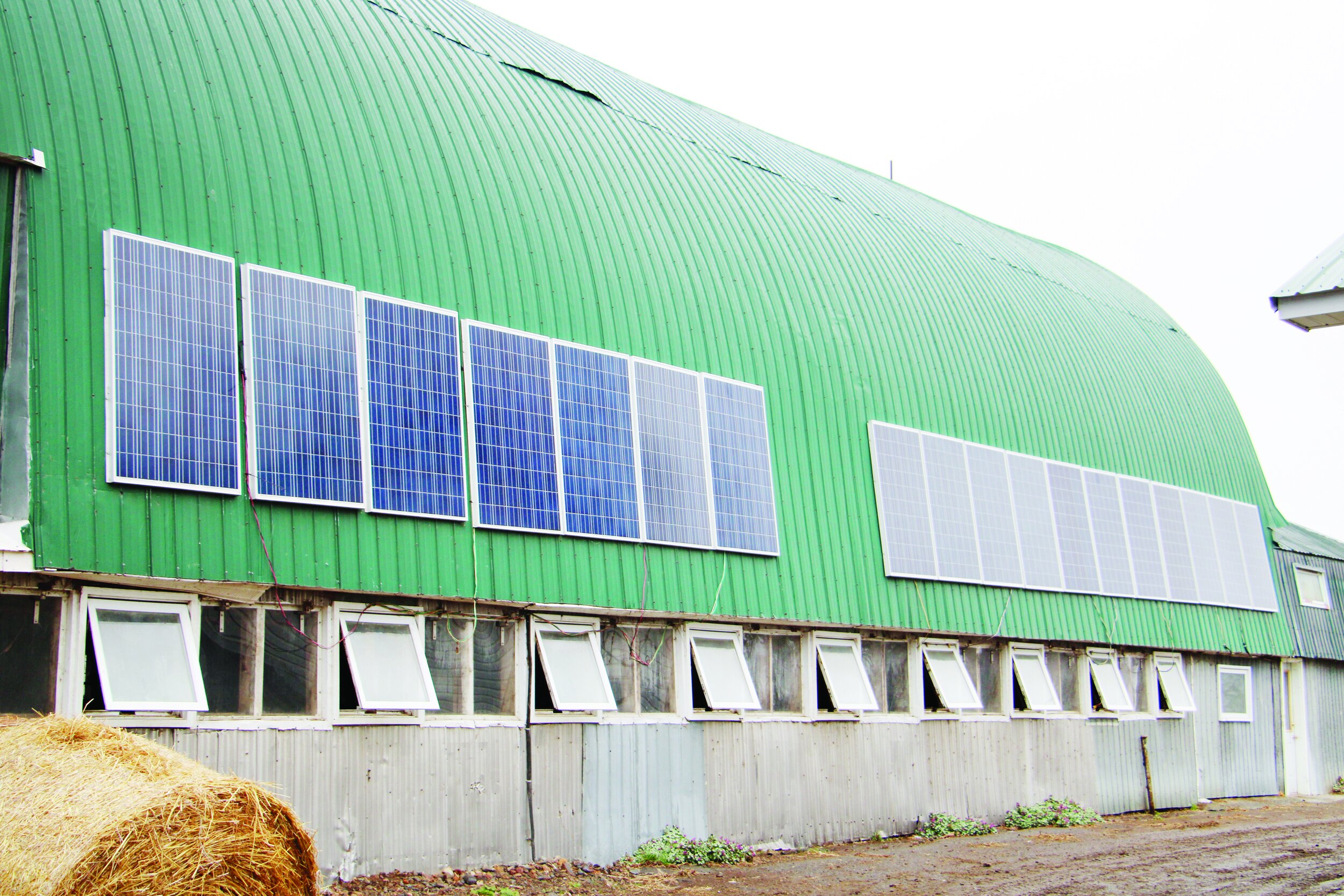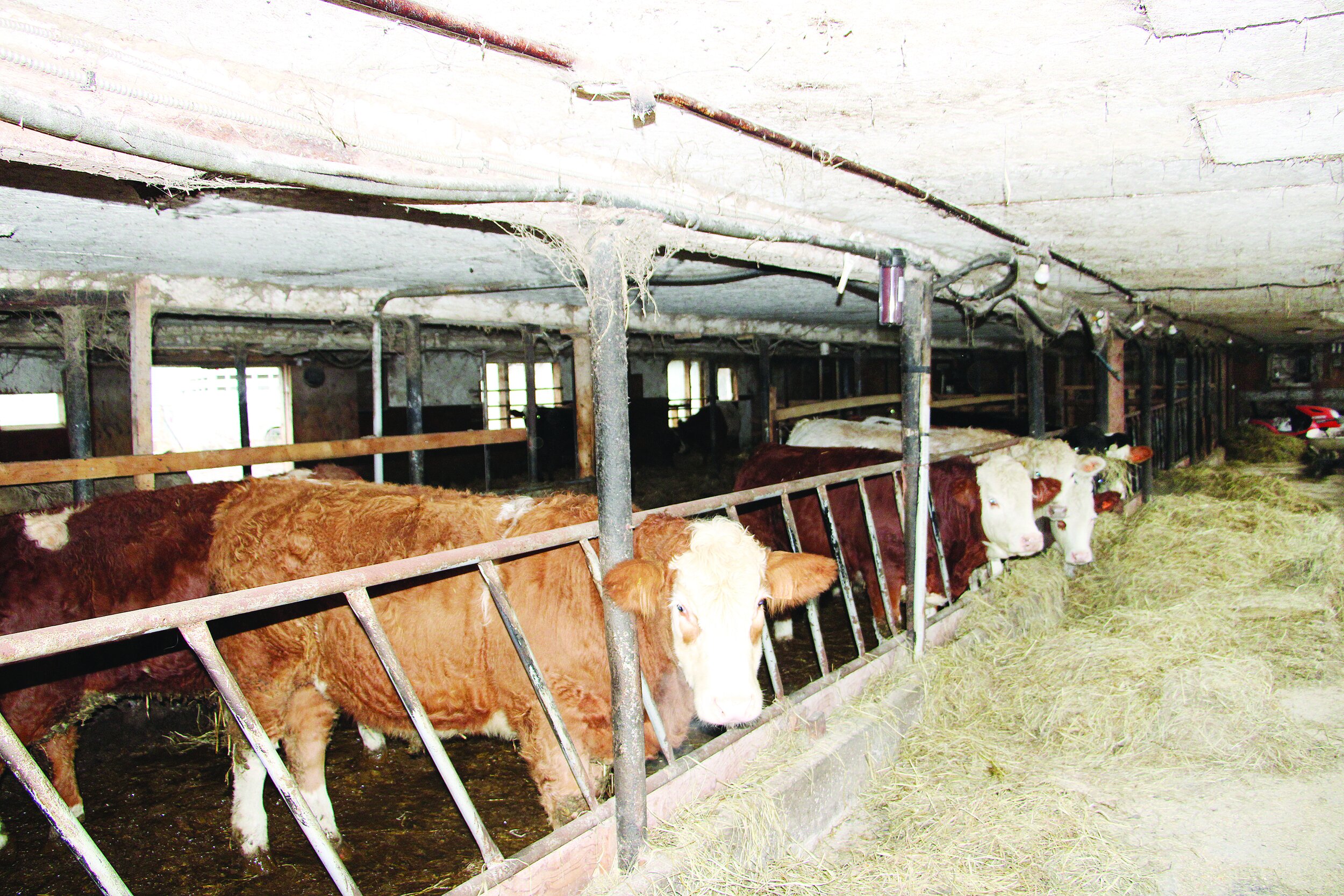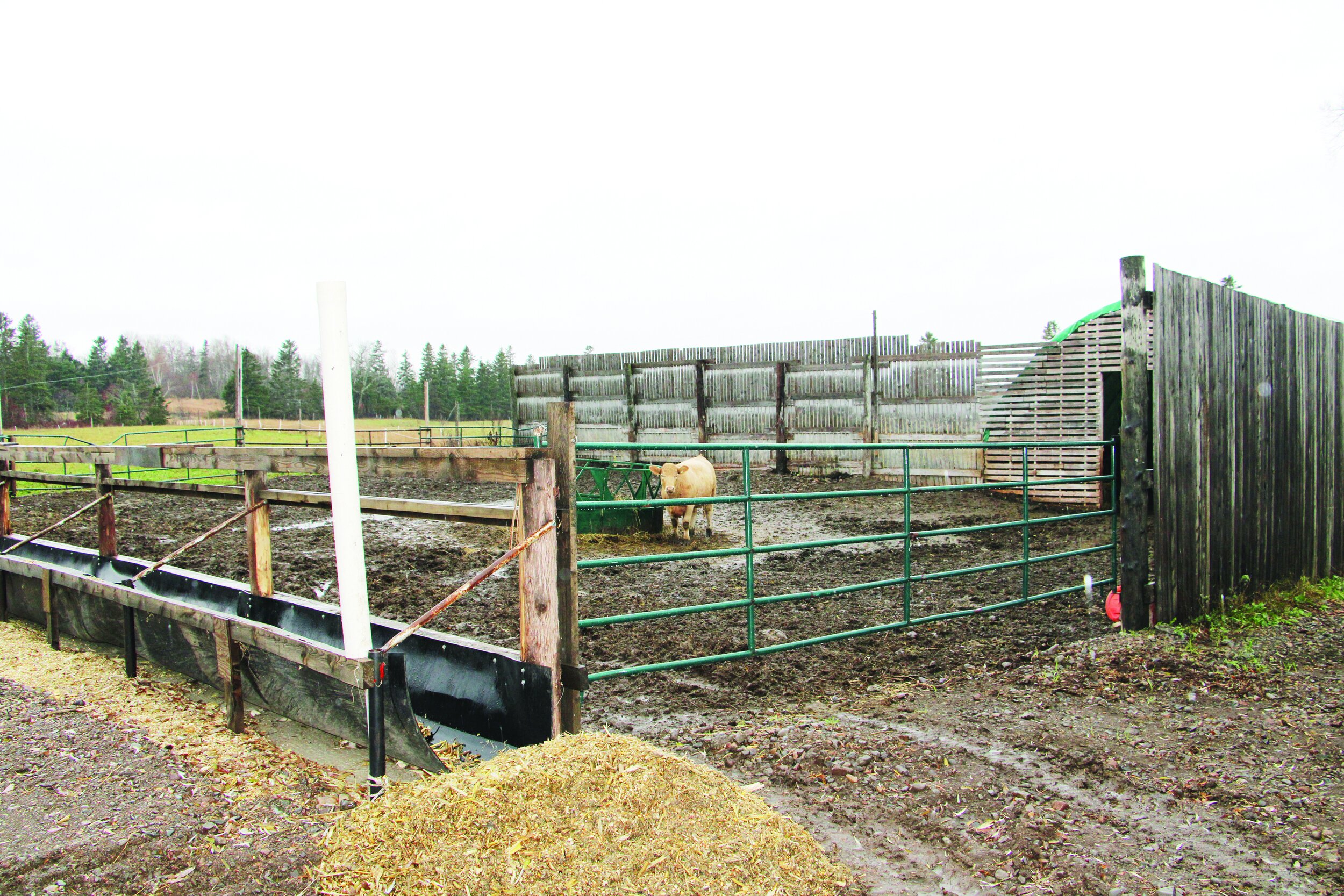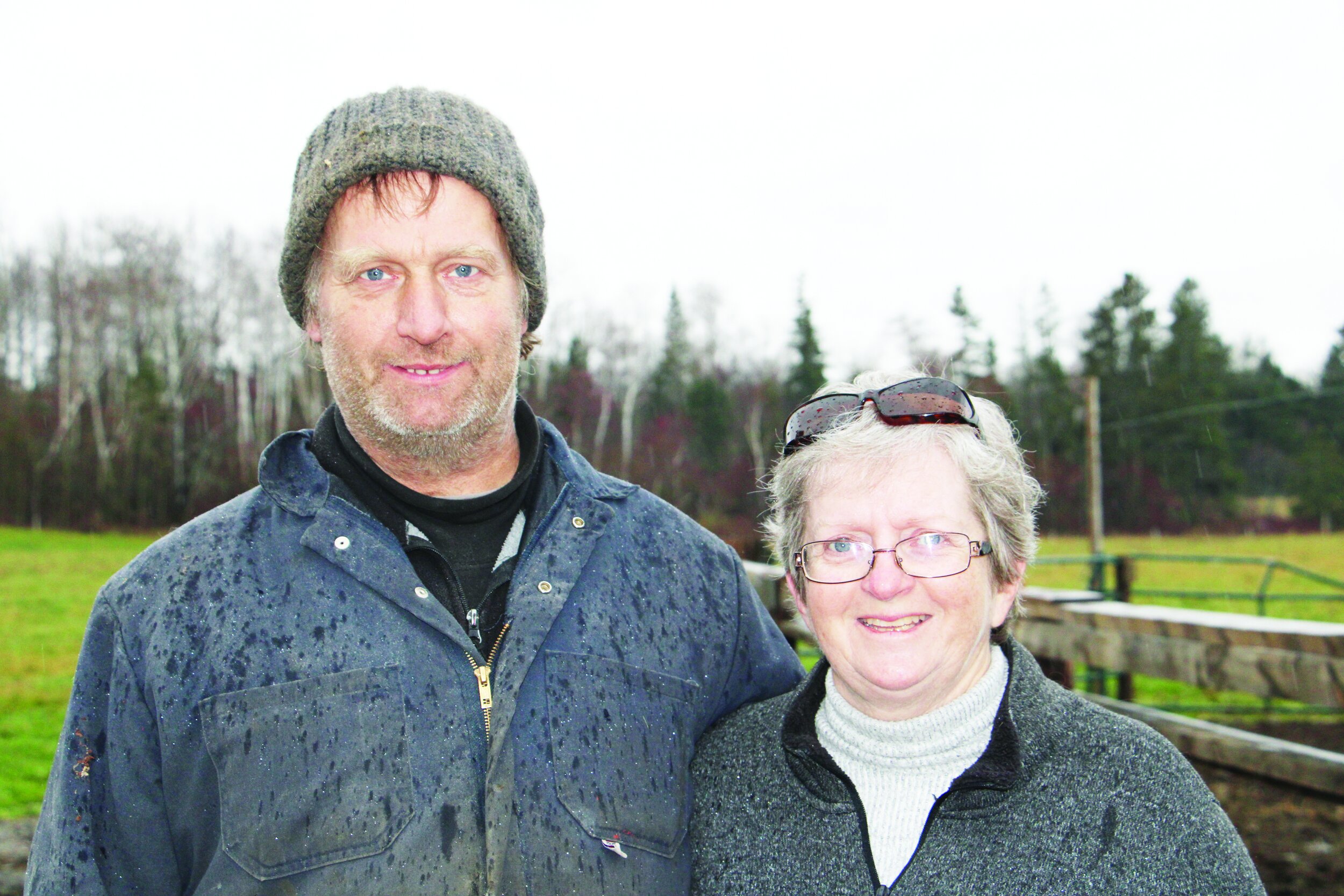Former dairy farm now finishing beef
/by George Fullerton
New Brunswick’s Route 134 follows the Bay of Chaleur coast, providing spectacular views of the bay and the distant southern coast of Quebec’s Gaspé region. The land is relatively flat, tipping gently to the coast. There is plenty of evidence of unused agricultural land and pockets of active farming. From the community of Jacquet River, a short diversion toward the coast takes visitors through fields of stubble and eventually to the farmstead of Bill and Joan Duivenvoorden.
Around the farmyard, there’s the house, a cluster of farm buildings, grain bins, and rows of tube-wrapped silage. During a visit on a decidedly cool and wet day last fall, the welcoming committee consisted of Joan and a happy farm dog.
The Duivenvoorden farm was established by Bill’s parents, Sophia and Anthony, in 1956. They began shipping milk in 1958, and over the years they expanded to milking around 70 cows in a tie-stall barn. The dairy farm expanded again to a free-stall operation, which grew to around 130 milking cows.
Bill took over the farm in 1992 and stopped milking in 2012. He went on to try different farming operations, including pork and veal production. He eventually settled on field crops, and added a cow-calf operation beginning in 2017.
NOVA SCOTIA ROOTS
Joan was farm-raised in the Annapolis Valley, studied at the Nova Scotia Agricultural College for a couple of years, and went on to complete a degree in plant protection at the University of Guelph. She worked for a time as an entomologist with Nova Scotia’s agriculture department.
Earlier married life found her moving and raising her children. And it was while living in New Brunswick in 2005 that Joan was hired as the coordinator of a local agri-environmental club. She helped farmers prepare environmental farm plans, nutrient management plans, and project funding applications, along with other support services.
“I thoroughly enjoyed my time working for the agri-environmental club,” she said. “I had a great bunch of farmers to work with and my clients were spread from Rogersville to Campbellton. I liked sharing information between farmers. When a farmer was dealing with a particular issue, I would often suggest how another farmer solved a similar issue. It was a very positive and rewarding part of my working career.”
It was through her job with the agri-environmental club that Joan met Bill. A romance ensued and they were married in 2018.
BUILDING THE BEEF HERD
“We had a few beef around and the price seemed not too bad so we decided to build up a herd,” said Bill. “We have lots of forage ground and we also grow barley and oats. We started seriously building up our beef herd in 2017-2018 and currently we have about 60 to calve in 2022.”
The beef operation has feeders in part of the former dairy barn and one of two beef groups in another portion of the barn, with the second calving group in an adjacent barn. Replacement heifers are raised in another building. All the cattle groups have access to free-choice silage and outdoor yards.
Bill explained that the herd was built up through the purchase of individual and small groups of females.
“We have a Heinz 57 mix of commercial cows,” he said. “They are roughly split into two calving groups.”
One group starts to calve in May and the second group starts to calve in late August. Bill likes the staggered birthing since it allows them to spread out their finishing program and thus spread out income and cash flow. The 2021 breeding season had two Red Angus bulls on duty.
FINISHING FEEDERS
“Since we have lots of high-quality forage and grain, we decided to try finishing our terminal animals,” said Bill. To round out their on-farm feed production, the Duivenvoordens added silage corn to their crop rotation, ensiling the crop in a heap near the barns.
The feeders occupy the former tie-stall end of the main barn. In addition to bale silage in their bunk, they also receive what Bill describes as his homemade TMR (total mixed ration).
He said they’ve marketed their finished beef to an abattoir and meat shop in Miramichi, adding that the beef gets great reviews from customers.
At every turn during the farm tour, there seemed to be another work-saving gadget that Bill created and innovated. His TMR system illustrates his creativity.
“I cut a forage box in half lengthways and maintained the apron chain for unloading,” he said. “I situated it along the inside wall of the barn, with a garage door opening to outdoors. I bucket the corn silage into it, and it unloads onto a conveyor. I use flexible augers to add (hammer-milled) barley and oats to the conveyor and it travels and then unloads to another conveyor which mixes the feeds pretty well. The conveyor delivers the mixture to a chute in front of the feeders’ manger. I fill up a wheelbarrow and then deliver the feed along the manger.”
LABOUR AND GEAR
When Bill and Joan were starting their beef operation, they set it up in such a way that they could do most of the work involved.
“We hire a guy to help out with cropping and forage and grain harvest,” said Bill. “When I was figuring the best way to handle round bales to the barns and how to clean out the barns, I realized that a skid steer would be the most practical machine, since its low height allowed access through the doorways. We have lots of attachments for our skid steer and it is definitely the most utilized piece of equipment on the farm.”
Our visit to the farm occurred on cleanout and re-bedding day for the pen section of the main barn. Manure is dumped in the former liquid manure lagoon, and there were lots of trips moving baled straw into the pen area, while cows and most of the calves were crowded into the feeding alley, save for a dozen or so calves that decided to hang out in the calf creep pen. The calf creep provides a safe stress-free area for calves where they also have access to a commercial calf grower ration and high-quality hay, which was eagerly consumed by the summer-born calves.
The skid steer was equipped with a round bale unroller that Bill fabricated. He said he also has a round bale cutter attachment, which is a big labour saver.
The cows were exceptionally clean and well-conditioned. They displayed both continental and British breed traits, and there was even a Belted Galloway and a British White, assuring herd diversity. The cows are typically on grass when they’re ready to calve, Bill said. However, most of the cows make their way into the barn to drop their calf.
PASTURE PADDOCKS
The pasture for the cows and young calves includes about 40 acres around the farmstead. It’s divided into eight paddocks, four for each of the two groups of brood cows and their calves. Seasonally, low grass production is supplemented with baled silage.
The farm’s fencing is electric wire on step-in posts and cedar posts. Bill said the plastic step-in posts are pulled and laid flat on the ground for winter because otherwise the snow would weigh them down and the wind would bend them out of shape, tearing off the clips that hold the wire. “So, it is better to pull them and then fence again in the spring,” he said.
Joan’s experience and dedication to agriculture led to her chairing the Agricultural Alliance of New Brunswick (AANB) environmental committee. She has since stepped down as chair but continues to serve on the committee.
In the past year, Bill and Joan became beta testers for the AANB’s new online environmental farm plan (EFP) platform.
Joan said that the testing was carried out by a number of farmers and agrologists to ensure that the software worked effectively prior to its launch this year. She added that EFP facilitator John Russell and EFP coordinator Likhita Potluri, both with the AANB, brought their extensive experience and talent to a team of software developers to create the online platform.
“Our farm was one of several who worked with the online format to see what worked well and what worked not so well, and all the input was reported back to the software developers to fine-tune the product,” said Joan.
“We are confident that the online version of the EFP will work well for farmers. The online version still requires accurate input of baseline data, including field maps and location of waterways and fuel storage and the like. John Russell and Likhita Potluri will continue to remain available to farmers to assist with creating and updating EFPs, whether online or on paper.”











